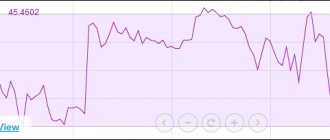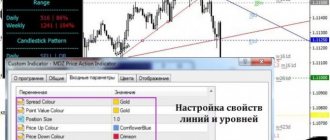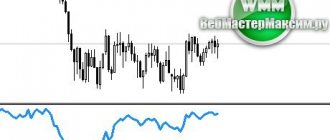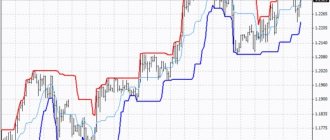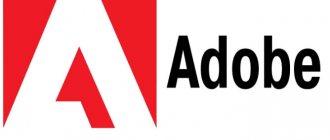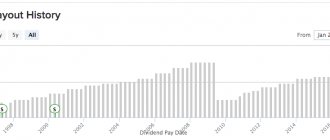We continue to study important stock valuation ratios. Today we will analyze a new indicator using the example of the very popular company Tesla.
Investors are always looking for ways to analyze stock prices. The P/S (price to sales ratio) indicator is often used for this purpose. To determine whether a stock is properly priced, the market capitalization and the company's revenue are compared.
This ratio is widely used because it places a company's valuation in the context of one of the easiest financial metrics to understand—revenue.
Origin of price-sales ratio
The P/S ratio was developed by stock market expert Kenneth L. Fisher. Fisher noted that when a company experiences early growth, investors tend to place unrealistic valuations on it. When the price falls below their expectations, investors panic and sell the stock.
Fisher believed that a company with strong management should be able to identify problems, solve them and move on. If the situation can be corrected, the share price and profits will increase.
To help solve the problem of overvaluation, Fisher came up with the P/S ratio. Cost of sales is used as the basis for the formula because when revenues fluctuate, sales do not.
Price to sales formula
The price-to-sales ratio can be determined in terms of the company's market capitalization or on a per-share basis.
Formula
P/S = current market price per share / annual sales per share; P/S = market capitalization / annualized revenue for the last 12 months.
Market capitalization = number of shares * market price. Total sales are the top line of a company's income statement.
The sales amount and the total number of shares outstanding can be found in the public records we provided in previous lessons, as well as in the income statement or notes.
The sales figure in the formula can refer to any of the following time periods:
- last twelve months (LTM);
- next twelve months (NTM);
- rolling twelve months (TTM).
P/S is also referred to as PSR, Sales multiple/Revenue multiple. P/S calculated based on projected sales is called "forward".
The price-to-sales ratio is one of the easiest ways to understand a company's valuation. It helps investors know how much they are really paying for an asset.
The primary activity of any business is generating revenue from the sale of goods/services, and P/S provides a valuation based on the company's performance without any accounting adjustments.
The P/S ratio also helps new companies or startups with zero net income to value their assets. A low P/S ratio is considered optimal because it indicates that the company is undervalued, but nevertheless, this ratio must also be analyzed from a historical and industry perspective.
An investment opportunity should be viewed holistically, which may help identify the underlying problem that may not be found by looking at the results of each formula individually.
As with most financial ratios, P/S can change daily, so it's important that the estimate is time-stamped. The P/S ratio is not an actual valuation, but an expected one. It is used to understand the true situation and compare with other companies in the same industry.
CRKT SPEW
Oh yes, CRKT SPEW... Let's discuss this right away. The name, but the sling cutter can be found with a knife arious problemsered/owner. The name chosen is stupid. While filming the video, I tried to joke something about this topic, but here it’s better to say it straight. CRKT SPEW is a stupid name, but a great knife. With that out of the way, let's get to the point, because the knife deserves it. SPEW (actually, SPEW) stands for Small Pocket Everyday Wharncliffe, and this is a really interesting model from a knifemaker Alan Folts. Alan makes his knives in a small shop on the Florida coast (a couple of hours drive from me) and is a surprisingly nice guy. He studied with classical masters and honed his style for many years. In addition to making beautiful custom knives, he collaborates with CRKT and in early 2010 released his first mass-produced knife Folts Minimalist. I wrote about this knife at the time and was very impressed at the time, so I was really happy to hear about the appearance of SPEW. This knife fills roughly the same niche as the Minimalist, a small fixed-blade knife designed for everyday carry.
Basic Blade Measurements and Features
SPEW is 158mm long, 76.2mm of which is on the blade, and weighs 85g. Not a bad option for an everyday knife and, in principle, small enough to wear around your neck. Personally, however, I prefer to carry it in my pocket (in a sheath, of course). The blade has a wharncliffe shape with concave slopes starting high at the butt and a very thin point. Such a tip is suitable for fine work and method and can quickly cope with any relevant task. However, it is quite fragile. The SPEW requires careful handling if you want this needle-thin point to last longer. Falling onto concrete will end it, and you probably don't want to use the knife as leverage. But I, knowing that this could be a problem, took it upon myself to test it properly and subjected the knife to a rather severe test, during which I, for example, pierced a stack of cardboard with it about 50 times. The point actually held up quite well. CRKT chose 5Cr13MoV . Not the most obvious choice, in my opinion, but she showed herself well. During testing, I covered everything around with scraps of cardboard and stabbed it with a knife many dozens of times. When finished the SPEW blade was still able to cut paper. I was honestly surprised, considering that 5Cr13MoV is a fairly soft steel and it was only hardened to 56 on the Rockwell scale. The only problem is that the steel doesn't take sharpening very well and I was never able to sharpen the knife like a razor. Of course, I am not a great master, but having tried both diamond stones and Japanese water stones, I could not get the edge of the desired sharpness. I'm not alone in this discovery and suspect it has something to do with the low carbon content.
Handle and ergonomics
The SPEW handle is a G10 on a full length stainless steel tang. The red and black G10 looks good, and it's nice to see it on a knife at this price point. The overlays are machined for comfort and beauty, and all corners are rounded. The structure is held together by bolts and I really like how everything fits together. The handle is definitely well made. The ergonomics of the SPEW were of great interest to me, as the Folts Minimalist is one of the most comfortable knives I have ever held in my hand. The ergonomics here aren't as aggressive, but I wasn't disappointed with how the knife felt in my hand. Like the Minimalist, the SPEW has a three-finger grip and a lanyard for the pinky finger. It's a comfortable way to hold a small knife and I'm very pleased with how the lanyard behaves. Alan did not forget about the choil and the thumb rest with jimping. The part of the jimping that is located at the level of the overlays doesn't really help matters, but the upper part of it works as promised. Overall, I'm very pleased with the ergonomics of this little knife.
Sheath
The SPEW comes with a very nice molded plastic sheath. The blade enters them with a distinct click and stays there well. The knife moves around there slightly, but will not fall out until you remove it yourself. I like that the sheath has a thumb groove that allows you to easily remove the knife with one finger. I like to carry it in my pocket and I like that I can reach the knife with one hand without having to remove it and the sheath from my pocket. If you don't like this method, the design provides a couple more. CRKT includes a piece of cord with the knife, so you can tie the sheath to your belt, or hang it around your neck. And, by the way, for wearing it around the neck, I would recommend a breakable chain or clamp, so that if the knife gets caught on something, the cord will not strangle you. There's also a more traditional belt loop so you can wear the SPEW vertically or horizontally. I love the sheath and the variety of options it provides.
CRKT SPEW – Results
SPEW is another successful collaboration between CRKT and Alan Folts. Minimalist fans are probably very interested in it, and I'm happy to say it won't disappoint. This is Alan's amazingly functional and compact design, beautifully brought to life by the guys from CRKT. I love the variety of wearing options and overall the whole set is really well made. I'm not very happy with the steel - but I can't say that it's really a serious problem. Yes, of course, I would prefer something that can take sharpening better, but the SPEW cuts, and cuts surprisingly well. I put the knife through some pretty serious tests and it passed them all very well. I think this is a great knife for the money and I recommend it if you are interested in design or want a small fixed blade knife for everyday use.
Examples
Educational example
For example, XYZ Company is listed at the current price of $5 per share. There are 200 million shares outstanding. Annual revenue is $400 million. Current P/S values can be calculated using any of the following methods:
Per share: share price / (annual sales / shares outstanding) = (5 / (400 / 200) = 2.5. By market capitalization: (share price * number of shares outstanding) / annual sales = (5 * 200 ) / 400 = 2.5.
Real example. TESLA
Let's take a closer look at the example of the exclusive company Tesla, CDF on shares, which are also traded in Gerchik & Co.
As you know, Tesla presented its quarterly report on October 21. The stock is currently listed at $429.92.
According to the formulas we know:
Price to sales (1) = Share Price / Total sales per share = price per share / (revenue / share) = 429.92 / (25.71 / 0.93) = 15.55. Price to sales = Market capitalization/ Total Revenue past 12 months = 402.07 / 25.71 = 15.64.
Now let’s look at this multiplier over 3 years. As you can see, the table and graphs show prices per security, revenue per share, PS ratio.
So, during the analyzed period, the share price increased by 215% (from $68.59 to $215.96). Sales increased by a total of 66%.
Consequently, over three years the company has become more valuable in terms of P/S multiple. In other words, as of 06/30/20, investors paid more for investments in it compared to the level of sales than 3 years ago.
In the first year, investors were willing to pay $4.22 for every dollar of sales per share. Third year: $7.99. There can be many reasons for this. For example, the company's superiority in the industry, speculation, etc.
Let's compare P/S of competitors as of October 22, 2020
- Tesla = 15.55.
- General Motors Company (GM) li/S = 0.45.
- NIU (NIU) = 6.21.
This suggests that Tesla is trading higher than its peers. And investors are willing to pay a higher price for its shares.
IMPORTANT!
It's worth remembering that a very high P/S ratio can be a warning sign.
Oxidative phosphorylation, P/O ratio.
OXIDATIVE PHOSPHORYLATION, ATP synthesis from adenosine diphosphate and inorg. phosphate, which occurs in living cells due to the energy released during the oxidation of org. in-in the process of cellular respiration. In animals, plants and fungi, oxidative phosphorylation occurs in mitochondria; in bacteria, the enzyme systems that carry out this process are located in the cell membrane. Mitochondria are surrounded by a protein-phospholipid membrane. A number of metabolic processes take place inside the mitochondria. food breakdown processes. in-c, supplying substrates for AN2 oxidation for oxidative phosphorylation. The substrates for oxidative phosphorylation are the breakdown products of organic compounds - proteins, fats and carbohydrates. However, carbohydrates are most often used as a substrate. Trioses formed as a result of glycolysis, and primarily pyruvic acid, are involved in further oxidation occurring in mitochondria.
This uses the energy of the cleavage of all chemical bonds, which leads to the release of CO2, oxygen consumption and the synthesis of large amounts of ATP. These processes are associated with the oxidative cycle of tricarboxylic acids and the respiratory electron transport chain, where ADP phosphorylation and the synthesis of cellular “fuel” - ATP molecules - occur. In the tricarboxylic acid cycle, electrons released during oxidation are transferred to acceptor molecules of coenzymes (NAD - nicotinamide adenine dinucleotide), which involve them further in the electron transport chain (ETC - electron transport chain). These events within mitochondria occur in their matrix. The remaining reactions associated with further electron transfer and ATP synthesis are associated with the inner mitochondrial membrane, with the mitochondrial cristae. The electrons released during the oxidation process in the tricarboxylic acid cycle, accepted on coenzymes, are then transferred to the respiratory chain (electron transport chain), where they combine with molecular oxygen, forming water molecules. The respiratory chain is a series of protein complexes embedded in the inner mitochondrial membrane and is the main energy conversion system in mitochondria. Here, sequential oxidation and reduction of elements of the respiratory chain occur, resulting in the release of energy in small portions. Due to this energy, ATP is formed at three points in the chain from ADP and phosphate. Therefore, they say that oxidation (electron transfer) is associated with phosphorylation (ADP + Phn = ATP), that is, the process of oxidative phosphorylation occurs. The efficiency of oxidative phosphorylation in mitochondria is determined as the ratio of the amount of ATP formed to the absorbed oxygen: ATP/O or P/O (phosphorylation coefficient). Experimentally determined P/O values, as a rule, are less than 3. This indicates that the respiration process is not completely associated with phosphorylation.
Based on the structure and functions of the components of the respiratory chain, a mechanism of oxidative phosphorylation has been proposed:
1. The enzymes of the respiratory chain are located in a strictly defined sequence : each subsequent protein has a greater affinity for electrons than the previous one (it is more electropositive, i.e. has a more positive redox potential). This ensures unidirectional movement of electrons.
2. All hydrogen atoms cleaved from substrates by dehydrogenases under aerobic conditions reach the inner mitochondrial membrane as part of NADH or FADH2 .
3. Here, hydrogen atoms (from NADH and FADH2) transfer their electrons to the respiratory enzymatic chain, along which the electrons move (50-200 pcs/sec) to their final acceptor - oxygen. As a result, water .
4. Electrons entering the respiratory chain are rich in free energy . As they move along the chain, they lose energy.
Part of the electron energy is used by complexes I, III, IV of respiratory enzymes to move hydrogen ions through the membrane into the intermembrane space. The other part is dissipated as heat. To simplify the above, present it in the form of an equality:
5. The transfer of hydrogen ions through the membrane (pumping out) does not occur randomly, but in strictly defined areas of the membrane. These sites are called conjugation sites (or, not entirely accurately, phosphorylation sites). They are represented by complexes I, III, IV of respiratory enzymes. As a result of the work of these complexes, a gradient of hydrogen ions is formed between the inner and outer surfaces of the inner mitochondrial membrane. Such a gradient has potential energy .
The gradient (Δμ, “delta mu”) is called an electrochemical gradient or proton gradient. It has two components - electrical (ΔΨ, “delta psi”) and concentration (ΔрН): Δμ = ΔΨ + ΔрН
The name “ conjugation sites ” arose due to the fact that the appearance of a proton gradient as a result of oxidative processes further ensures the phosphorylation of ADP to ATP (see paragraph 6). It is thanks to these three enzyme complexes that the energy of oxidation can be transferred to phosphorylation , i.e. there is a coupling (linking) of two processes.
6. As the completion of all previous events and their necessary result, ATP production occurs: H+ ions lose their energy passing through ATP synthase (H+-transporting ATPase, EC 3.6.3.14.). Some of this energy is spent on ATP synthesis . The other part is dissipated as heat:
Applying Price to Sales Ratio
The P/S ratio shows a company's efficiency in generating earnings given its outstanding debt. It is important to remember that it is most useful when compared to businesses in the same sector. Without proper context, statistics can seem abstract and lose significance.
The P/S ratio is based on publicly available data. The price of shares, the number of securities issued, and total earnings data are publicly known and are not “released” by the corporation for publication in the market. By comparison, the price-to-earnings ratio, or P/E, depends on the application of a company's specific accounting practices to determine the net earnings divisor. Typically, due to the statistics used in each calculation, the P/S ratio is not easy to manipulate.
The P/S ratio is especially useful when evaluating cyclical companies or those that are not currently profitable. As long as the company does not face immediate bankruptcy problems, there is the possibility of making a profit in the future.
For example, in the case of a retailer, revenues often fluctuate depending on the season; a company may periodically incur losses while long-term profitability remains unchanged.
Price-to-sales ratio restrictions
1. The price-to-earnings ratio has its limitations. For example, P/S varies across many industries, and it is not fair to compare companies in different sectors. Also, this multiplier cannot distinguish an organization that uses borrowed funds from one that does without them. The reason is that the company may report a low P/S ratio and be close to bankruptcy.
2. How can an investor notice the difference? In this case, enterprise value EV should be used in the calculation rather than capitalization (adding long-term debt to market capitalization and subtracting any cash). This approach eliminates the difficulty of comparing "polar" companies - those that rely on debt to grow sales and those that do not and have lower sales levels.
3. Additionally, the P/S ratio does not provide any information about profitability or costs, so it is important for investors to look at this ratio along with other financial indicators.
Open an account and start trading CFDs on shares of successful companies
Summary
- The P/S ratio allows you to value a company with little or no profit.
- A higher P/S ratio relative to its peers or industry may suggest an exaggerated asset value. At the same time, a lower P/S ratio suggests that it is undervalued.
- Comparing the P/S ratios of companies in different industries may not be practical given the differences in costs required to generate profits or pay debts.
- As with all analysis methods, sales-based ratios are only part of the solution. Investors should consider several metrics to evaluate a company.
- A low P/S ratio may indicate unrecognized value potential—assuming other criteria exist, such as high profitability, low debt levels and good growth prospects. Otherwise, the P/S ratio may be a false indicator of value.
While the P/S ratio is viewed as a leading industry metric for investment screening, detractors argue that its value in determining a company's intrinsic value is limited. According to the efficient market hypothesis, all important information about a company's value is reflected in its current stock price.
Thus, using stock price as an input to calculate the P/S ratio is counterintuitive, making the multiple largely irrelevant.
Conversely, many analysts and investors believe that a company's share price is based on public perception. For such parties, the opportunity to invest in an undervalued company is a potential way to gain financial benefit.
When chasing deals in the stock market, the P/S ratio can be a useful tool and an integral part of fundamental analysis.
⇐ Secrets of making money on stocks. Lesson 5. P/E ratio Secrets of making money on stocks. Lesson 7. P/CF. Example on Facebook ⇒
P/B ratio in simple words.
The P/B ratio shows the ratio of a company's market capitalization (Price) to its book value of assets (Book Value Ratio). Sometimes referred to as P/BV.
Price - how much the company is currently worth on the market. Or the market value of one share x the number of securities.
Book value is an accounting term. The valuation of a company's assets minus all of its liabilities.
In simple terms, how much money can you get for a company if you sell all its property (from buildings, equipment to door handles, tables, chairs and stools, golden toilets of top managers and slaves). Remove all funds from reserves and retained earnings. Use the money received to close all debts (settle with creditors, pay salaries, pay all taxes). And what remains (if it remains) will be considered the book value.
The P/B ratio shows how much an investor receives from a company for every dollar he invests.
- P/B =1 (company value equals book value)
- P/B < 1 (means the market values the company below its assets)
- P/B > 1 (people are willing to pay more than the company is worth).
For example,
P/B = 5 shows that for every ruble invested, the investor receives only 20 kopecks (a fifth) of the company’s assets.
We reinforce with examples
There is a wrecked car. On the market they give 50K for it.
If you sell the parts separately, you can get 100 thousand from it.
The indicators of such a simple business will be as follows:
Market price: P = 50,000 rubles.
Book value: B = 100,000 rubles.
We get a P/B ratio of 0.5.
There is a non-residential premises on the ground floor. Cost 100 thousand dollars. Lots of squares. The place is trump. Well located. Passability is good.
I rented it out as a store to some Pyaterochka. For a period of 10-20 years.
You get $20 thousand a year for rent. Or 20% profit.
Would you buy such a business for yourself?
At this price - definitely yes!
But the owner is not a fool to “sell the goose that lays the golden eggs.” And he wants not 100 thousand for it (B - book value), but 150 (P - price or market value).
Under these conditions, the P/B ratio will be equal to 1.5. And the yield will drop to 13.3% per year.
But given that if Pyaterochka moves out, there will be crowds of tenants willing to take her place.
Why not invest in this business?
Go ahead.
The property owner is doing well. Things are going well. Money is dripping. He's thinking about expansion.
I had my eye on one more object. But there is no free money. Goes to the bank. And takes out a mortgage secured by the first premises. The bank gives him a hundred dollars on credit. The property is being rented out again. For twenty a year.
But appetite comes with eating. Again a mortgage, again for 100 thousand and a 3rd room.
Each person gets to charge $20K in rent per year. A total of 60 pieces fall from the sky.
And you are again offered to take part.
In terms of interest, profit has not changed. The three properties are collectively valued at $300,000. And they generate 60 thousand bucks a year.
The profitability is still the same - 20%.
The friend asks for everything, as usual, 1.5 times more or 450 thousand. It turns out the same 13.3% yield.
Only P/B in this situation will no longer be 1.5, but... how much?
Only one property is fully owned - for 100 thousand. The rest still belong to the bank.
As a result, we get 450 (price - market price) / 100 (book value) = 4.5.
P/B = 4.5 or for every 1 ruble of property you will have to pay 4.5 rubles.
IT, technology, pharmaceuticals, patents, licenses and brands
Do you think a P/B ratio > 5 is too much? And more than 10, 20, 30?
Who would pay 10 times more for company shares than it is worth on the balance sheet?
Easily!
The problem with the P/B multiple is that it has begun to be used mainly to value capital-intensive industrial enterprises. Something that has physical property. Factories, machine tools, steam locomotives, drilling rigs, pipelines.
In our age of technological progress, when spaceships roam the expanses of the big theater...
How to measure the value of a technology, patent or brand on paper?
There is a patent for Viagra (owned by Pfizer), adhesive plaster (Johnson and Johnson). Take the “regular” brand Coca-Cola (produces 5 of the 6 most popular drinks in the world), Apple, Microsoft. People are willing to pay more for a brand than a similar unknown product costs.
For example, a few years ago, Disney spent $4 billion to buy Marvel. Star Wars cost about the same. These are just rights. Intangible asset.
Low P/B
What if you find undervalued companies with a price/book value ratio of less than 1?
The pioneer of fundamental analysis, Benjamin Graham (his most famous student was Buffett) paid special attention to this. I was looking for companies that were undervalued by P/BV. But many years ago, such data was not available to a wide range of people. There were many opportunities to gain inside information. And Graham took advantage of this.
Now, thanks to the Internet, everyone is on an equal footing. And information spreads instantly. And it seems like it’s almost impossible to find something interesting.
How to use the multiplier
It is incorrect to evaluate a company on just one price/book ratio.
We need to know what the company's net profit P/E ratio is, whether it is growing or falling over the years. Return on capital. And many other indicators or scary words. has a low P/B. But every year the costs are growing. And incomes are declining. To keep the business afloat, loans are constantly taken out. In short, the business is dying. But it continues to work shakily. Want to invest? P/B - fire! Only 0.5.
Only in aggregate, based on the analysis of various financial ratios, promising companies are identified.
The P/B Multiplier itself shows whether the company's shares are asking for too much money.
It is necessary to compare indicators within the context of one country. And one industry.
For example, if you take 2 oil companies with approximately the same multipliers (profits, profitability, etc.).
The first P/B will be 1.5, and the second 4. It is better to choose a company with a lower multiplier value.



